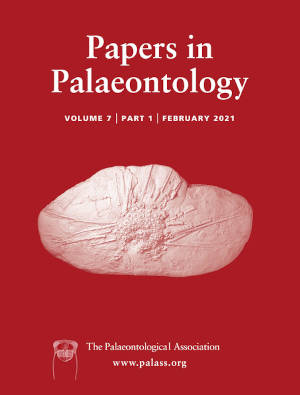Reg. Charity No. 1168330

Modern hydrothermal vent communities are based on chemosynthesis by microbial primary producers. Molecular phylogenetic divergence estimates indicate that many of the dominant vent taxa arose during the Cenozoic and Cretaceous; however, the fossil record of vent communities from these time periods is poor. One occurrence of such Cretaceous vent communities pertains to six volcanogenic massive sulphide deposits in the Troodos ophiolite of Cyprus. These deposits represent hydrothermal activity on deep (2500–5000 m) arc-related spreading ridge(s) in the Neotethyan Ocean over several million years during the late Cenomanian and earliest Turonian. The Cyprus vent communities consist of worm tubes, representing possible vestimentiferans and serpulids, together with a moderate diversity of abyssochrysoid gastropods, belonging to eight new species (Desbruyeresia kinousaensis sp. nov., Desbruyeresia memiensis sp. nov., Desbruyeresia kambiaensis sp. nov., Hokkaidoconcha morisseaui sp. nov., Ascheria canni sp. nov., Cyprioconcha robertsoni gen. et sp. nov., Paskentana xenophontosi sp. nov. and Paskentana dixoni sp. nov.) in five genera and three families; none of the species is shared between vent sites. A single gaudryceratid ammonite from one of the vent sites most likely represents a water-logged shell that sank from surface waters. The gastropod fauna contains the first representatives of the genera Desbruyeresia, Hokkaidoconcha, Ascheria and Paskentana from hydrothermal vents, and also the youngest representative of the last-named genus in any environment. The Cypriot vent communities share tube worms with slightly older (Cenomanian) and younger (Turonian–Santonian) vent communities elsewhere in the western part of the Neotethyan Ocean.
AcknowledgementsSteffen Kiel and an anonymous referee are thanked for their reviews. AK was partially supported by research grant no. 2012/07/B/ST10/04189 from the National Science Centre, Poland. EMM was supported by a Geological Society of London Undergraduate Research Bursary. CTSL thanks John Dixon for the donation of fossils in his collection for the present study, Jörg Mutterlose, Stuart Robinson, Tom Dunkley-Jones and Sarah Greene for discussions about Cretaceous palaeo-ccd and Christopher MacLeod for information about Indian Ocean and Neotethyan plate reconstructions. Krzysztof Hryniewicz is thanked for discussions on chemosynthetic bivalves.